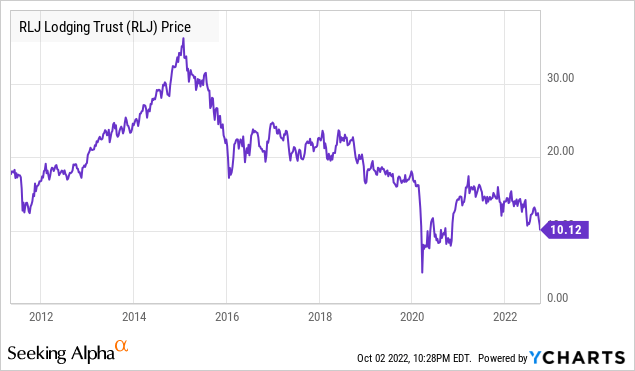AndreyPopov
Co-produced with Beyond Saving
Let’s talk about convertibles. No, I don’t mean a ragtop that you take for a cruise on a sunny day to feel the wind in your hair – if you still have yours! I mean convertible preferred equity.
We often talk about the “capital stack”. Companies frequently have different types of capital that are unique in their risk and reward.
- Senior secured debt: The top of the stack, this is debt that must be paid by the company and can seek recourse through the legal system. In a bankruptcy, the senior secured debt has the first claim for recovery. Common types of senior secured debt are revolvers and term loans. Typically this debt is owned by institutions like banks, insurance companies, and funds.
- Second lien debt: Second lien debt is a secured debt, but as the name implies, it comes in second behind senior debt. We most frequently see second lien debt trade at the institutional level. However, it sometimes trades publicly. For example, GEO’s (GEO) new 2028 bond that we recommended swapping into are Second Lien Notes. This made them senior to GEO’s existing bonds.
- Unsecured/subordinated debt: Unsecured debt enjoys the advantages of debt in that if the company defaults, the lenders can seek recourse through the courts and force a bankruptcy. In bankruptcy, unsecured debt is in line behind any secured or senior debt, which means it typically doesn’t fare well. The benefit isn’t so much that it can recover in bankruptcy. It is more the threat of bankruptcy provides the company incentive to ensure the debt is paid. Types of unsecured or subordinated debt include bonds that are often publicly traded and baby bonds.
- Preferred equity: Unlike debt, which can go to court if the company misses a payment, preferred equity does not have that advantage. The company has an agreement to pay a predetermined amount on predetermined dates, but it is not an obligation that can be pursued in court. Preferred equity gets priority over common equity, and dividends can be suspended without triggering bankruptcy. The main incentive for the company to pay the preferred is that the common shares cannot collect a dividend unless the preferred are first paid in full. Preferred equity benefits from a predictable payout like debt investments do, but it is still an equity position. Preferred equity is frequently publicly traded but is sometimes provided to investors through private deals.
- Common equity: The bulk of the stock market is “common equities”. These are ownership positions in the underlying company that come with the ability to vote and full exposure to the risks and rewards of the company. There is no guarantee for the size or timing of dividends, and there is no legal recourse if a business performs poorly. This is the highest risk, highest reward position.
In general, the higher up the capital stack you are, the lower the risk and the lower the reward. The lower in the capital stack you go, the higher the risk and the higher the potential reward.
Preferred equity is attractive because you can get higher yields than debt investments while also getting a predictable dividend. If a company struggles, the common dividend will be cut first, providing a safety cushion for the preferred equity. However, that comes with a trade-off. Specifically, if the company does very well, the preferred equity misses out on the upside.
When we invest in preferred, our first focus is usually on ensuring that the company is healthy and will be able to continue paying dividends indefinitely. The best way to ensure that safety is to be invested in preferred of companies that are improving. But if a company is improving, wouldn’t we want a common equity position to get the most benefit?
“Convertible” preferred equity is a solution that provides the benefits of a predetermined dividend and priority over the common equity while also providing exposure to upside if the company does well. It does this with a provision allowing the shareholder to convert to common shares at a certain price and, in some cases allowing the company to force conversion to common shares. Let’s take a closer look at some convertible preferred shares in the HDO portfolio.
EPR Properties Convertible Preferred Shares
EPR Properties, 5.75% Series C Cumulative Convertible Preferred (EPR.PC)
EPR Properties (EPR) is a REIT that owns experience-based properties. Movie theaters, golf centers, ski resorts, amusement parks, water parks, and more. The safety of the preferred shined during COVID when EPR saw many of its tenants unable to pay rent and suspended the common dividend. The preferred dividends kept coming without interruption.
EPR-C is a convertible preferred that is convertible at the holder’s option when the common shares are $71.34 or higher. Each preferred share can be converted into 0.3504 common shares. The company can force conversion if the common shares close 135% above the conversion price for 20 out of 30 consecutive trading days. So if EPR trades above $96.31 for an extended period, it can force preferred shareholders to accept 0.3504 common shares for each preferred. Since EPR common has traded above $80 a few times in the past, it is certainly capable of reaching the conversion price, and if the company does well, reaching the forced conversion price is not out of the question.
As a result, EPR-C investors get an 8.3% fixed yield today while having exposure to the upside if EPR common does very well and starts trading above the conversion price again.
EPR Properties, 9.00% Series E Cumulative Convertible Preferred Shares (EPR.PE)
Investors who believe in the future of EPR could also consider EPR Properties Series E Preferred. EPR-E has a higher current yield at 8.7% and is convertible at a lower share price of $55.41 into 0.4512 common shares. EPR can force conversion if the common closes above 150% of the conversion price ($83.11) for 20 out of 30 trading days.
RLJ Lodging Trust Convertible Preferred Shares
RLJ Lodging Trust, $1.95 Series A Cumulative Convertible Perpetual Preferred Shares (RLJ.PA)
From time to time, events happen that make the conversion feature of a convertible preferred to be so high that it is extremely unlikely the common shares will ever reach that price. In this case, the shares do not share upside with the common equity. However, you end up with a preferred share that can never be called. Since convertible preferred shares typically rely on forced conversion as the company’s main option to get rid of the preferred, when that price becomes unrealistically high, you have a preferred that investors can hold as long as they want. This is known as a “busted” convertible.
RLJ-A is one of our favorites in this category. RLJ-A is not convertible until RLJ common reaches $89.09/share, and conversion cannot be forced until it is 30% higher than that, $115.82. This is a price we do not believe RLJ will be able to achieve. As a REIT, RLJ pays out the majority of its earnings in dividends, making the price a small portion of the total return.
We can see a world where RLJ common doubles and gets back to prior highs, but is it going to go up 10x?

That isn’t typical for REITs because the dividend is a constant headwind to price. Remember, dividends come out of the price with each payment.
Convertibles usually end up busted because of a reverse split. In this case, RLJ-A was originally issued by Felcor, a hotel REIT that was on the brink of bankruptcy but struggled through the Great Financial Crisis with a reverse split. RLJ then acquired Felcor and, as part of that transaction, inherited RLJ-A.
Investors can buy busted convertibles with the confidence that they will never be called. This is especially attractive when the busted convertible is with a company that has a very strong balance sheet and a conservative business model. RLJ is a much more cautious and much stronger company than Felcor was. We can invest in RLJ-A at an attractive yield and then collect the coupon indefinitely. Even amid COVID, RLJ continued to pay RLJ-A uninterrupted.
Dreamstime
Conclusion
Investing is often about balancing risk and reward. As income investors, receiving stable and predictable income is our primary goal. However, we are perfectly happy to have capital gains too! Preferred shares are great for income, but the capital gains are often limited by call risk.
Convertible preferred can provide investors a fixed income, and if the company does exceptionally well in the future, the preferred can convert and share in the upside with the common.
Other times, preferred shares can become “busted”, meaning that the conversion price is unlikely to ever be reached. This creates a preferred that is truly perpetual. I hate when I am getting a great yield, and the company calls it away, forcing me to find another investment on their schedule instead of mine. A busted convertible like RLJ-A allows me to collect my coupon indefinitely. Maybe in the future, I will find an opportunity I like better, but the decision of if and when to sell is mine.
Convertible preferred can be a great option to diversify your portfolio across the capital stack.


Be the first to comment